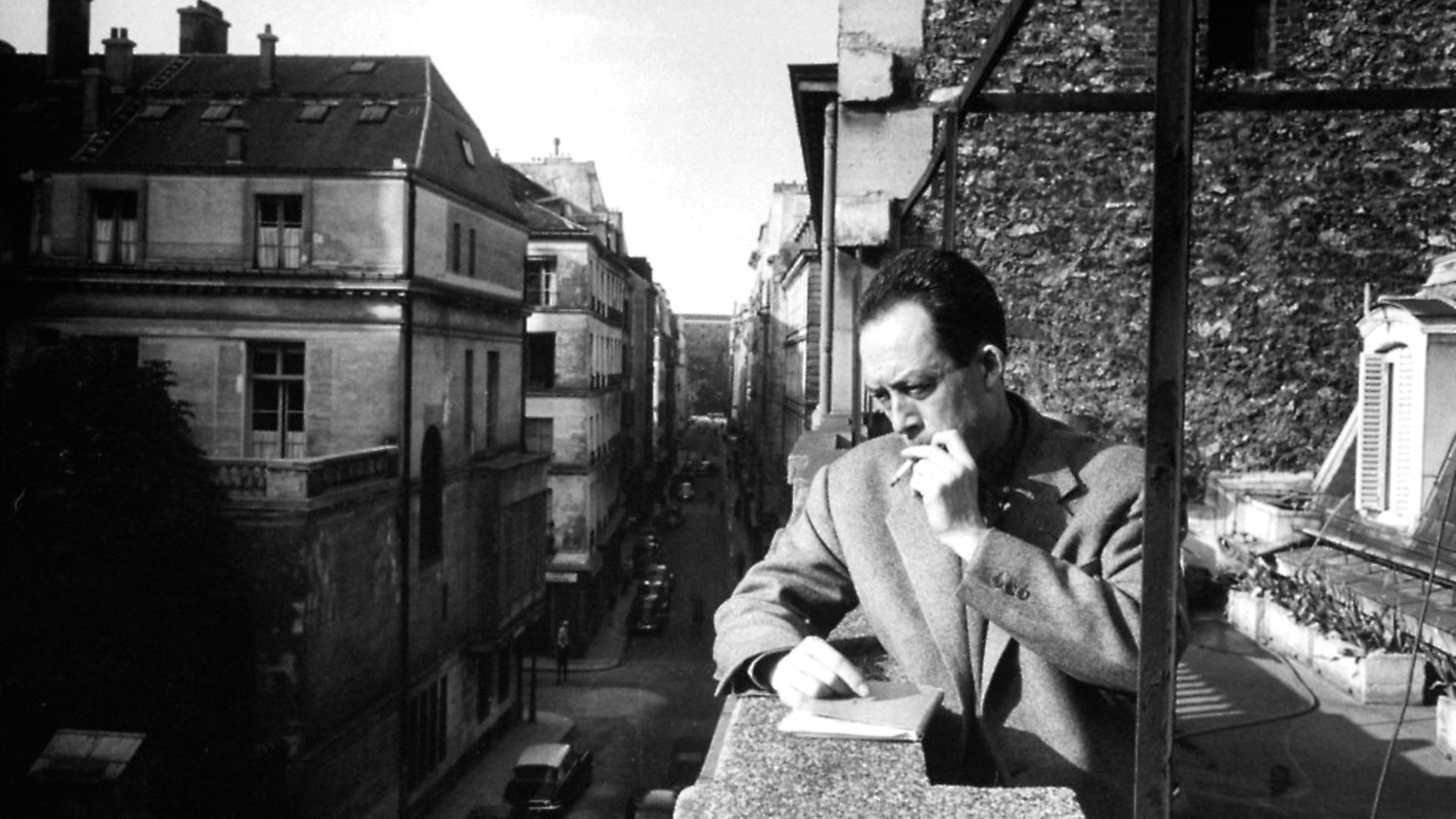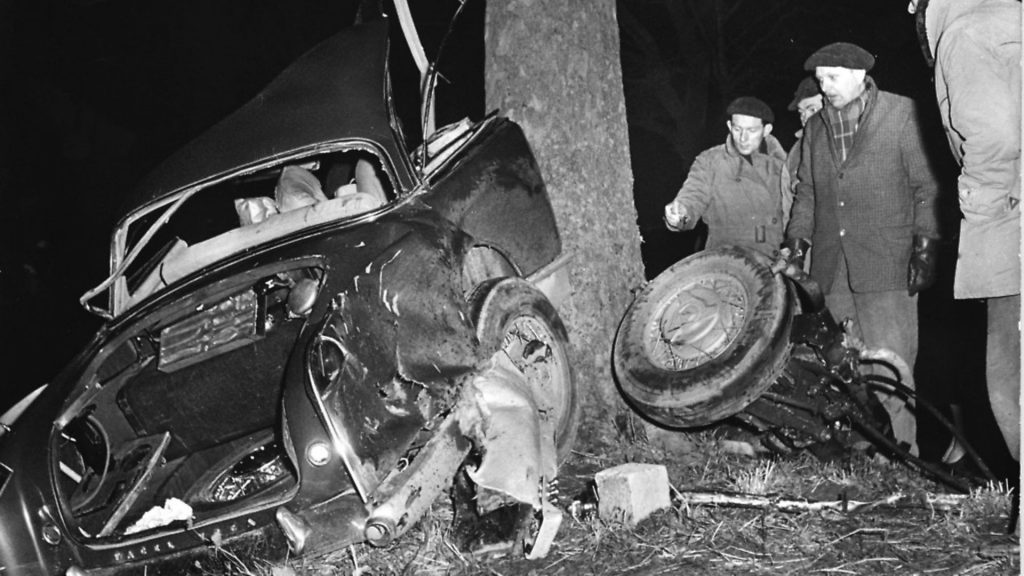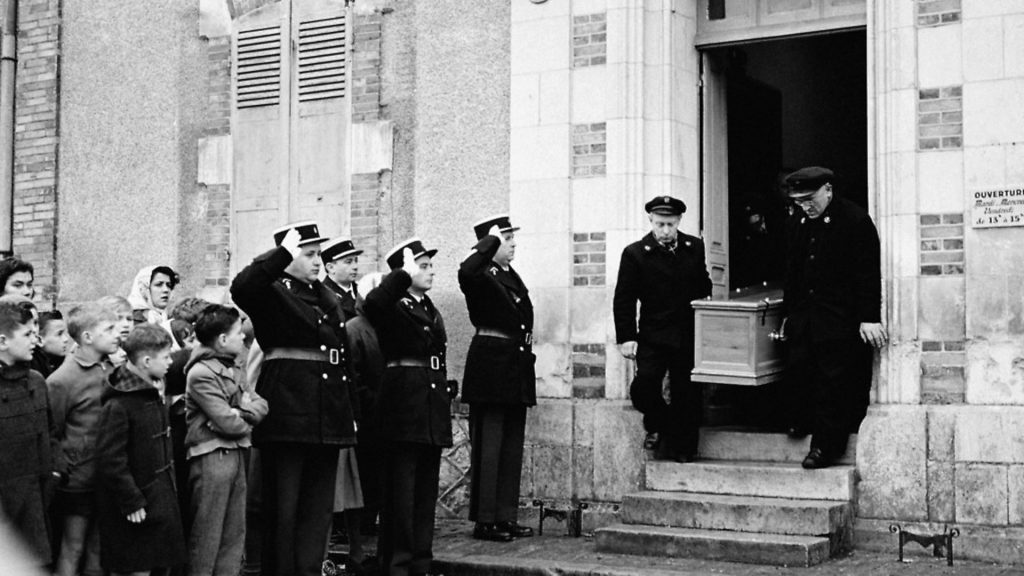
Benjamin Ivry investigates revived claims that Albert Camus was assassinated by the KGB and considers other material published to mark the anniversary of his death

Sixty years after the Nobel Prize-winning French author Albert Camus’ premature death in a car accident on January 4, 1960, can anything new be said about him? His works, including the novels The Stranger, The Plague, and The Fall, and book-length philosophical essays The Myth of Sisyphus and The Rebel, have been analysed to death.
In an attempt at innovation, Giovanni Catelli, an Italian poet and writer, suggests that Camus’ car crash was really a sinister Soviet plot.
Camus suffered a broken neck and skull fracture when the Facel Vega sportscar in which he was riding hit a tree in Villeblevin, a small town south east of Paris.
The Facel Vega, considered a French competitor to the Mercedes SL or Aston Martin DB5, was driven by its owner, Camus’s publisher Michel Gallimard. Catelli alleges that it was tampered with by KGB agents.

Catelli’s theory was first floated in the Italian newspaper Corriere delle Sera in 2011. He followed up with a book, Camus Must Die (Camus deve morire; Nutrimenti Publishers, 2013), the updated French edition of which has just been released, with the less imperious title, La mort de Camus, but to much scruting and attention.
Catelli recently informed the French blogger Thibault Isabel: “As soon as I discovered the work of Camus, and especially his involvement in politics of his time, I always had the feeling, almost a certainty, that the accident in which this great author was the victim could not be the result of chance, but must have been done purposefully.”
Because of Camus’s documented anti-Communist stance and ties to anarchist politics in his native Algeria, Catelli was predisposed to think that Camus was on a hit list.
This was especially so before a scheduled visit to France from March to April 1960 by Nikita Khrushchev, first secretary of the Communist party of the Soviet Union. According to Catelli, Camus might have denounced Khrushchev and the USSR, causing an international scandal.
His information was drawn from the published journals of Jan Zábrana, a Prague-born translator of American Beat poets who had produced Czech versions of Allen Ginsberg, Lawrence Ferlinghetti and Gregory Corso.
Zábrana, who died in 1984, left a posthumously published diary, A Whole Life. In an entry for 1980, he claimed that an unnamed man had informed him that Dmitri Shepilov, a Soviet politician and one-time minister of foreign affairs, ordered that Camus be murdered in response to an anti-Soviet article published in March 1957 in the French newspaper Franc-Tireur.
Catelli recounts all this in Camus Must Die. Yet the historical record shows that by March 1957, Shepilov was no longer Soviet foreign minister, but secretary of the central committee responsible for Communist ideology, where he denounced composers in the USSR who did not follow the party line.
In June 1957, Shepilov was the only central committee secretary to oppose Khrushchev in an abortive coup, incurring the leader’s wrath.
In disgrace, Shepilov was sent to Kyrgyzstan to work at the economics institute of the local Academy of Sciences. In 1960, he was expelled from the Soviet Academy of Sciences and demoted to a clerkship in the state archives.
So Shepilov – who died in 1995 – lacked any status to order the assassination of a world-famous author in 1957 or 1960.
In 2001, Shepilov posthumously published a memoir, translated as The Kremlin’s Scholar: A Memoir of Soviet Politics Under Stalin And Krushchev, with no mention of Camus.
Catelli indirectly cites another source backing the claim that Camus was murdered: Jacques Vergès, a French lawyer who died in 2013 and who defended, among others, the Nazi war criminal Klaus Barbie and the French Holocaust denier Roger Garaudy.
According to Catelli, Giuliano Spazzali, an Italian barrister, contacted him after Camus Must Die was published in Italy, stating that Vergès had informed him that Camus’ “staged accident was schemed by a KGB section with the endorsement of French intelligence”.
Why would Vergès allegedly spread such hearsay about Camus? Vergès was an opponent of French imperialism, defending Algerian nationalists accused of terrorist activities before Algeria was declared independent from France in 1962.
Camus, by contrast, held the opinion that his native land should remain French property, a view that understandably remains unpopular in Algeria today, where Camus’ name is hardly revered in official circles.
Describing those who reject his hypothesis about Camus as murder victim, Catelli told Magdalena Solari, a literary blogger in Argentina, in 2018: “There are not many, but those who reject it do so for ideological reasons.”
To be sure, Camus is still the focus of ideological discord in France and elsewhere. A decade ago, on the 50th anniversary of Camus’ death, French president Nicolas Sarkozy proposed him for honorary reburial in the Panthéon, the monument in Paris’ Latin Quarter which entombs national heroes.
In response, Jean Camus, one of the late writer’s twin children, slated Sarkozy in Le Monde newspaper for attempting an “appropriation” of his father through a “misinterpretation”.
Setting aside hearsay and speculation, on the 60th anniversary of Camus’ death, much concrete documentary evidence has become newly available. Collections of private correspondence have been published, mostly from Camus’ long-time publisher Gallimard, shining light on the author’s life and works.
They include more than 1,400 pages of letters exchanged from 1944 to 1959 by Camus and the Spanish-born actress Maria Casarès, which will be reprinted in paperback in January.
Casarès was one of the three girlfriends to whom Camus sent love missives before starting on his fatal car ride. He had put his wife and children safely on a train to Paris shortly before.
Beyond a busy amorous life, Camus devoted much energy to friendship. Other recent collections of letters with Algerian-born chums such as the novelist Louis Guilloux (also published in January); and the artist Louis Bénisti as well as with the Italian intellectual Nicola Chiaromonte (both published in 2019) show an amiable, endearing Camus.
An unpretentious side of the writer is seen here, far more approachable than the glacial Camus in public squabbles with his intellectual rivals Jean-Paul Sartre and Simone de Beauvoir.
Counteracting these pompous, formal exchanges, Camus’ letters explain more of the inner man who chose to translate James Thurber’s The Last Flower, a whimsical illustrated story about the themes of peace, love, and resilience.
Thurber’s parable tells of the only survivors of a future world war, a man, woman, and flower, who create yet another civilization that necessarily leads to more conflict. Camus’ translation of this flight of fancy was first published in 1952 and reprinted in 2019.
Its playful version of cyclical history echoes his more formal Myth of Sisyphus, in which a mythological Greek king was condemned by the gods for eternity to roll a boulder up a hill, whereupon it rolls down again once he gets it to the top.
Confronting the absurdity of life, Camus concluded: “The struggle itself toward the heights is enough to fill a man’s heart. One must imagine Sisyphus happy.”
Rather than obsessing over unsubstantiated allegations about his tragic demise 60 years ago, readers might relish the rediscovered evidence of a jubilant Camus.









